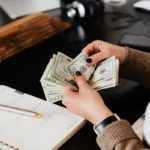The real estate market has been a bit of a rollercoaster lately, with home prices climbing higher and higher. For VA loan borrowers, navigating these rising prices comes with its own set of challenges and opportunities.
VA loans, known for their unique benefits—like no down payment and no private mortgage insurance (PMI)—are still one of the best ways for veterans and active-duty service members to achieve homeownership. But with home prices skyrocketing in many areas, what does this mean for those using VA loans? Let’s dive into how rising home prices impact VA loan borrowers and what you can do to stay ahead.
In this Article
Current State of the Housing Market
As we roll into 2024, the housing market isn’t showing many signs of slowing down. Home prices in cities across the U.S. are hitting new highs, with demand still outweighing supply in most areas. According to recent data, national home prices increased by about 18% in 2023, and it doesn’t look like this trend is going anywhere soon.
Levi Rodgers, a real estate expert with years of experience working with veterans, says, “The market is incredibly competitive right now. Especially in cities like San Antonio, veterans looking to buy homes need to be ready to make quick decisions and come to the table with solid financing.”
The challenge is real, but VA loans offer several key advantages that can help veterans compete—even as home prices climb.
Key VA Loan Benefits
Despite rising prices, VA loans offer a range of benefits that can make buying a home more affordable and less stressful. Here’s a quick rundown of the major perks:
- No Down Payment Required: Unlike conventional loans, VA loans let eligible borrowers purchase a home without a down payment. This is a game-changer, especially in a market where saving up for a down payment is tougher than ever.
- No PMI: Another big win for VA loan borrowers is the lack of PMI. PMI is usually required for conventional loans with down payments under 20%, and it adds up to a significant monthly cost. By avoiding PMI, VA loan borrowers save money every month.
- Competitive Interest Rates: VA loans generally offer lower interest rates compared to conventional loans, which can make a big difference in how much you pay over the life of the loan.
- Flexible Credit Requirements: The VA doesn’t set a strict minimum credit score, but lenders usually look for scores around 620 or higher. This flexibility makes VA loans accessible even if your credit isn’t perfect.
These benefits can really help veterans stay competitive in today’s market, but rising home prices still present challenges that need to be addressed head-on.
The Impact of Rising Prices on VA Loan Limits
In 2020, the Blue Water Navy Vietnam Veterans Act eliminated loan limits for borrowers with full entitlement. This means if you’re eligible and meet the lender’s requirements, you can purchase a home without worrying about a cap on your loan amount. Sounds great, right? But there’s a catch: If you’ve already used some of your VA loan entitlement (for example, if you have an existing VA loan), then loan limits still apply.
Matt Schwartz from Southlake Loans explains it like this: “If you’re a veteran with full VA entitlement, you have more flexibility in terms of loan amounts, especially in high-cost areas. But if you have a VA loan already, you’ll need to pay attention to the county loan limits to avoid running into trouble.”
For borrowers in areas with higher home prices, having full entitlement is a big deal because it lets you bypass those loan limits entirely. But for those with partial entitlement, it’s important to know what your local loan limits are and how they might affect your buying power.
Affordability Concerns for VA Loan Borrowers
While VA loans offer great benefits, rising home prices can still strain affordability. Even with no down payment and no PMI, higher home prices mean higher mortgage payments, which can put a squeeze on your budget.
Rodgers points out, “One thing veterans need to watch out for is the overall affordability of their monthly payments. Rising property taxes and insurance costs tied to home prices can really add up.”
Here’s a quick breakdown of the potential costs:
| Cost Factor | Impact on Borrowers |
|---|---|
| Mortgage Payments | Monthly payments increase with home prices |
| Property Taxes | Taxes rise as home values rise |
| Homeowners Insurance | Higher home prices can increase insurance costs |
So even though VA loans help keep upfront costs low, ongoing monthly costs can start creeping up as home prices rise. It’s important to make sure you can comfortably handle these expenses before committing to a purchase.
Factors Driving Rising Home Prices
To fully understand what’s happening with home prices, we need to look at the factors driving these increases. Here are some of the big ones:
- Low Inventory: There just aren’t enough homes on the market to meet demand. Fewer homes for sale lead to bidding wars, which drive prices up.
- High Demand: Many people are looking to buy homes, especially as remote work becomes more common and families look for larger spaces outside of crowded cities.
- Inflation: The cost of building materials, labor, and land has all gone up, which in turn pushes home prices higher.
- Low Interest Rates: While mortgage rates have been rising slowly, they’re still relatively low historically, which has kept demand high as buyers rush to lock in good deals before rates climb further.
Predictions for Home Prices and Interest Rates
So where are home prices and interest rates headed? While no one can predict the future with certainty, many experts believe home prices will continue to rise, though perhaps at a slower pace than we’ve seen in the past few years.
Levi Rodgers adds, “I think we’re going to see prices hold steady or even increase in high-demand areas like Texas for the next couple of years. There might be some leveling off in certain markets, but I wouldn’t expect any major drops.”
On the interest rate front, the Federal Reserve has signaled that it may raise rates to combat inflation, which could push mortgage rates higher. For VA loan borrowers, this means now might be a good time to lock in a lower rate before they go up.
Schwartz advises: “If you’re thinking about buying, don’t wait too long to lock in your interest rate. Even a small increase in rates can make a big difference in your monthly payment.”
Tips for VA Loan Borrowers in a Rising Market
Rising home prices don’t mean you have to sit on the sidelines. Here are some tips to help VA loan borrowers navigate the market and get the best deal possible:
- Boost Your Credit Score: While VA loans have flexible credit requirements, improving your credit score can help you secure a lower interest rate. Pay off debt, make on-time payments, and avoid opening new lines of credit before applying for a mortgage.
- Lock in Your Rate: If you’re planning to buy soon, consider locking in your mortgage rate to protect yourself from future rate increases.
- Look in Different Areas: If the area you’re interested in is out of your price range, consider looking in nearby towns or suburbs where home prices are more affordable.
- Consider Refinancing: If you already have a VA loan and are dealing with high-interest rates, refinancing could help you lower your monthly payments.
- Work with a VA Loan Specialist: Not every lender understands the VA loan process. Working with a specialist who knows the ins and outs of VA loans can help you avoid potential pitfalls and secure the best terms.
Conclusion
Rising home prices definitely present challenges for VA loan borrowers, but the benefits of VA loans still make homeownership possible for many veterans and active-duty service members.
By understanding how rising prices affect loan limits, affordability, and market trends, you can make informed decisions and successfully navigate today’s housing market.

















